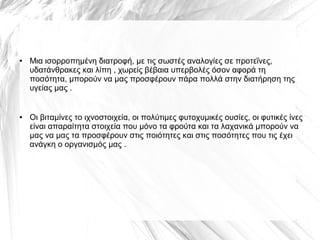Reducing Process Safety Hazards: A Novel AI-Based Patent

Table of Contents
AI-Driven Predictive Maintenance for Enhanced Process Safety
The core of this patent lies in its AI-driven predictive maintenance capabilities. By leveraging real-time data analysis, the system anticipates equipment failures and potential hazards before they occur, dramatically improving overall process safety.
- Real-time data analysis from sensors and other monitoring systems: The AI system ingests data streams from various sources, including temperature sensors, pressure gauges, vibration monitors, and flow meters, providing a comprehensive overview of the process.
- Machine learning algorithms identifying patterns and anomalies indicative of potential failures: Advanced machine learning algorithms analyze this data, identifying subtle deviations from normal operating parameters that might signal impending equipment failure or process instability. This includes anomaly detection capabilities that flag unusual events that traditional monitoring systems might miss.
- Predictive modelling to forecast the likelihood and timing of hazardous events: Based on identified patterns and anomalies, the AI system generates predictive models, forecasting the probability and timing of potential hazardous events. This allows for proactive interventions to mitigate risk.
- Automated alerts and notifications to relevant personnel: When a potential hazard is identified, the system automatically alerts relevant personnel, providing crucial time to implement corrective actions, preventing potential accidents and minimizing downtime.
This AI-powered predictive maintenance approach is a significant step forward in reducing process safety hazards and minimizing the risk of costly downtime.
Real-time Hazard Identification and Risk Assessment
Beyond predictive maintenance, the AI system continuously monitors process parameters for real-time hazard identification and risk assessment. This ensures immediate responses to developing situations, further enhancing process safety.
- Integration with existing process control systems (PCS): Seamless integration with existing PCS allows for continuous monitoring without disrupting existing workflows.
- Advanced algorithms for analyzing complex data streams to identify subtle deviations from safe operating limits: The system uses advanced algorithms to analyze vast datasets, identifying even subtle deviations from safe operating limits that may indicate potential hazards.
- Automated risk assessment based on identified hazards and their potential consequences: Once a potential hazard is identified, the AI system performs an automated risk assessment, evaluating the severity and likelihood of the hazard's potential consequences.
- Prioritization of hazards based on severity and likelihood: This allows for efficient resource allocation, focusing efforts on addressing the most critical hazards first. This ensures that resources are utilized effectively for reducing process safety hazards.
Improved Operational Efficiency and Reduced Downtime
By proactively addressing potential hazards, the AI system significantly improves operational efficiency and minimizes costly downtime.
- Reduced maintenance costs due to predictive maintenance: Proactive maintenance significantly reduces unexpected equipment failures and the associated repair costs.
- Minimized production disruptions from avoided accidents and equipment failures: Preventing accidents and equipment failures minimizes production disruptions and maximizes output.
- Improved safety performance leading to reduced insurance premiums: A demonstrably improved safety record can lead to lower insurance premiums, reducing operational costs.
- Enhanced resource allocation due to accurate hazard prioritization: Efficient resource allocation leads to improved overall productivity and profitability.
Enhanced Compliance and Regulatory Reporting
The AI system streamlines regulatory compliance and reporting procedures, simplifying data management and ensuring adherence to industry standards.
- Automated generation of reports for regulatory compliance: The system automatically generates reports required for regulatory compliance, simplifying record-keeping and reducing administrative burden.
- Simplified data management for audits and inspections: Centralized data management simplifies the audit process, ensuring compliance with regulations and industry best practices.
- Improved traceability of safety-related events: Detailed logging of all safety-related events improves traceability and facilitates investigation of incidents.
- Facilitates compliance with industry best practices and standards: The system’s automated functionalities aid in ensuring adherence to relevant industry standards and best practices, minimizing the risk of non-compliance.
Conclusion: Securing a Safer Future with AI-Powered Process Safety
This novel AI-based patent offers a transformative solution for reducing process safety hazards, delivering significant improvements in predictive maintenance, real-time hazard identification, operational efficiency, and regulatory compliance. By proactively addressing potential safety risks, this system helps create a safer and more efficient working environment across various industries. Its innovative approach to data analysis and risk assessment sets a new standard for proactive hazard management. Learn more about how this groundbreaking AI-based patent can revolutionize your approach to reducing process safety hazards and achieve a safer, more efficient operation.

Featured Posts
-
 From California Dreaming To Cotswolds Charm Will Beyonce And Jay Z Make The Move
Apr 30, 2025
From California Dreaming To Cotswolds Charm Will Beyonce And Jay Z Make The Move
Apr 30, 2025 -
 Ypologistes Apo Ines To Mellon Tis Ygeias
Apr 30, 2025
Ypologistes Apo Ines To Mellon Tis Ygeias
Apr 30, 2025 -
 Commanders 2025 Nfl Draft A Three Day Big Board Of Players To Watch
Apr 30, 2025
Commanders 2025 Nfl Draft A Three Day Big Board Of Players To Watch
Apr 30, 2025 -
 Watch Live Ru Pauls Drag Race Live Reaches 1 000 Performances
Apr 30, 2025
Watch Live Ru Pauls Drag Race Live Reaches 1 000 Performances
Apr 30, 2025 -
 Channing Tatum Moves On Date Night With Inka Williams After Zoe Kravitz Breakup
Apr 30, 2025
Channing Tatum Moves On Date Night With Inka Williams After Zoe Kravitz Breakup
Apr 30, 2025
Latest Posts
-
 Fans Go Wild Over Beyonces Butt Flashing Levis Ad
Apr 30, 2025
Fans Go Wild Over Beyonces Butt Flashing Levis Ad
Apr 30, 2025 -
 Beyonces Bold Look Levis Campaign Sparks Debate Over Short Shorts
Apr 30, 2025
Beyonces Bold Look Levis Campaign Sparks Debate Over Short Shorts
Apr 30, 2025 -
 As Festas De P Diddy Um Documentario Com Donald Trump Beyonce E Jay Z
Apr 30, 2025
As Festas De P Diddy Um Documentario Com Donald Trump Beyonce E Jay Z
Apr 30, 2025 -
 Levis New Campaign Featuring Beyonce A Look At The Controversial Shorts
Apr 30, 2025
Levis New Campaign Featuring Beyonce A Look At The Controversial Shorts
Apr 30, 2025 -
 Beyonce Jay Z E Trump Em Festas Privadas Documentario Sobre P Diddy
Apr 30, 2025
Beyonce Jay Z E Trump Em Festas Privadas Documentario Sobre P Diddy
Apr 30, 2025
